Report: DEMA 2019
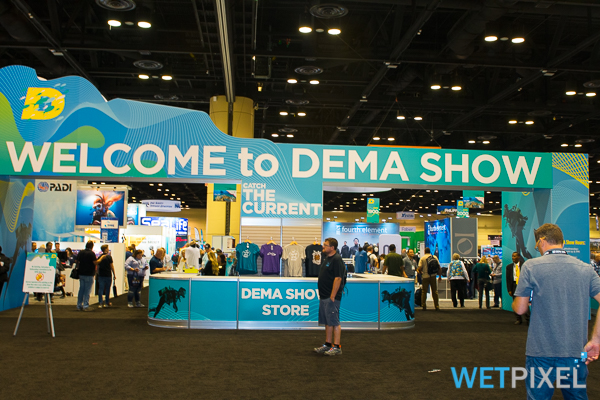
The Diving Equipment Marketing Association (DEMA) annual show is currently being held in the Orange County Convention Center in Orlando, Florida. The largest diving equipment show in the world, manufacturers and image makers gather to network and view new products. Wetpixel will be on site throughout the show and our goal is to try and ensure that those of you that cannot attend get to see all the new imaging products.
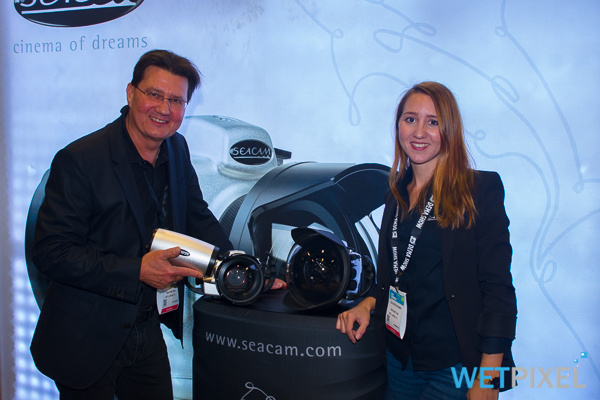
Seacam
My first appointment for the day was with Harald Hordosch of Seacam. Big news for the company this year is the release of their new Seaflash 160 Digital strobe.
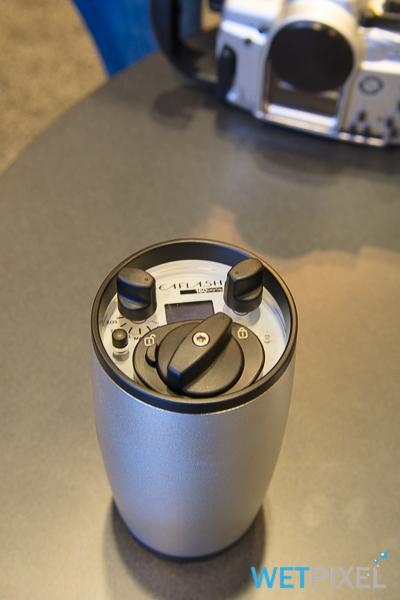
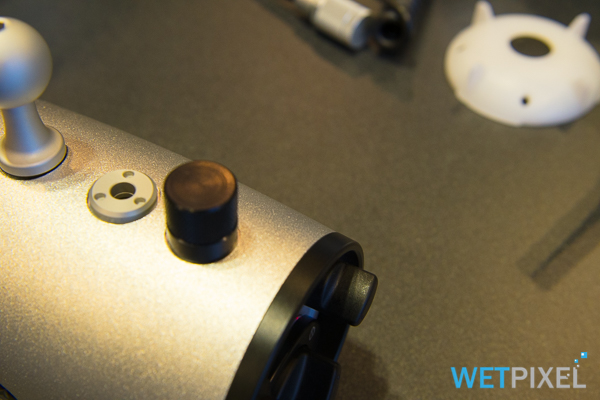
Similar in size to the existing Seaflash 150, it offers both wired and fiber optic triggering options and a power output of 160 watt/seconds at a color temperature of 4500°K.
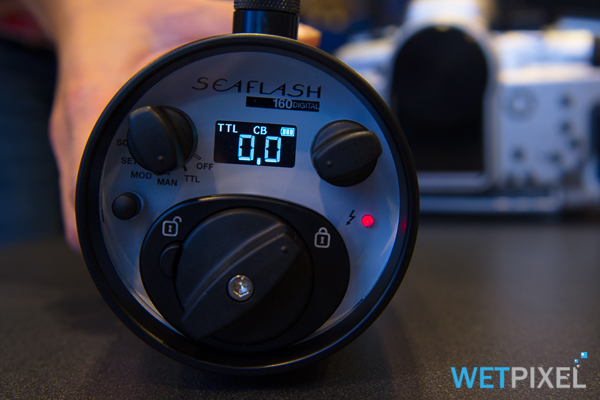
It has integrated TTL for Nikon and Canon cameras, and an OLED screen that gives information when navigating the strobe’s settings menus. The screen rotates to provide correct orientation when the strobe is inverted.
TTL output tuning is available for 3 stops plus or minus in 1/3 stop increments and there are 14 steps of manual adjustment. High speed sync is enabled and perhaps uniquely, it offers a stroboscopic mode, with between 2 and 15 images synced within camera sync speed or manual time settings. Full power flash output can be added on first or last flash.
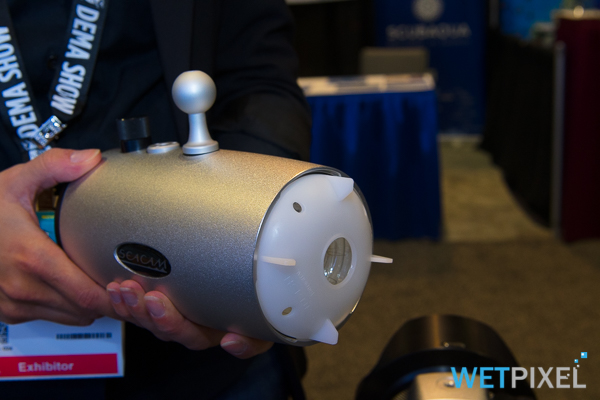
Both the macro protection ring and diffuser now attach with a bayonet style fitting.
There is an LED aiming light, and its output can be rapidly switched between 2 levels, along with infinite adjustments via the menu. The strobe is powered via a compact NiMh battery pack which has an integrated charger.
Other specs include a beam angle of 130° and it will output 250 flashes at full power. Recharge time for the battery pack is 150 minutes. It is available to order with either Nikonos N5 or Seacam S6 connections.
The Seaflash 160 will be shipping in around 6 weeks time and will be priced at €1780.
Harald showed me Seacam’s completed converted Nikonos RS 28mm lenses.
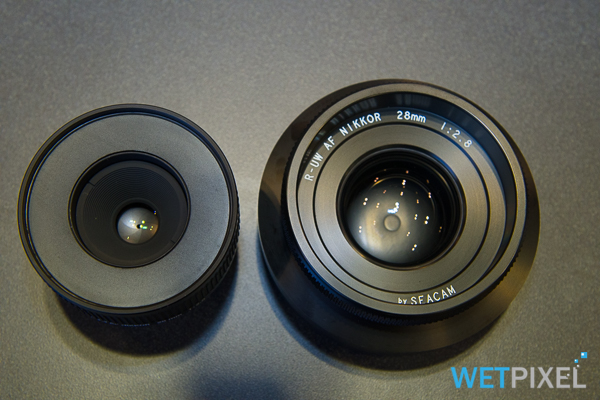

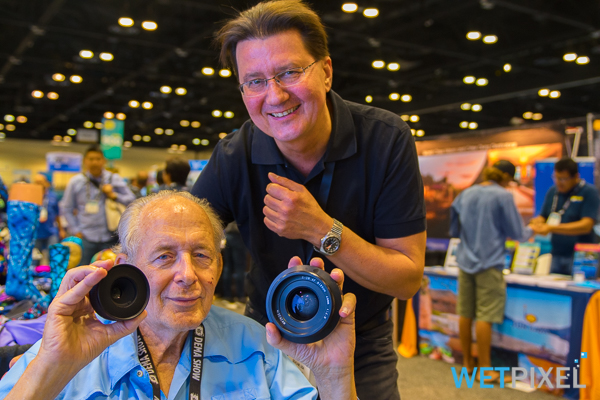
Other news for Seacam includes the release of 2 housings for Sony mirrorless cameras. The first is shipping now and is for both the a7rIII and a9 cameras. The second will be shipping soon and will accommodate the a7rIV and a9II cameras. In each case, the only change needed to move between the camera models is the replacement of the gear that attaches to the camera’s mode dial.
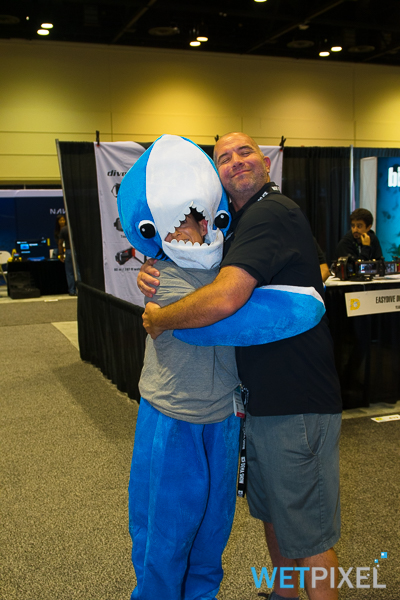
Other new housings being developed include the Blackmagic Pocket Cinema Camera 6K. This will have 2 cinema specified batter pack options and will ship in early 2020. Output will be possible via HDMI 2 to the Atamos Ninja 5, for which there will also be a housing available. All the electrical connections in Seacam housings use LEMO connectors, and these will be used in the HDMI connections too.
Lastly, Seacam is working on a design for the Nikon D6, which will be available in time for the next Olympics.
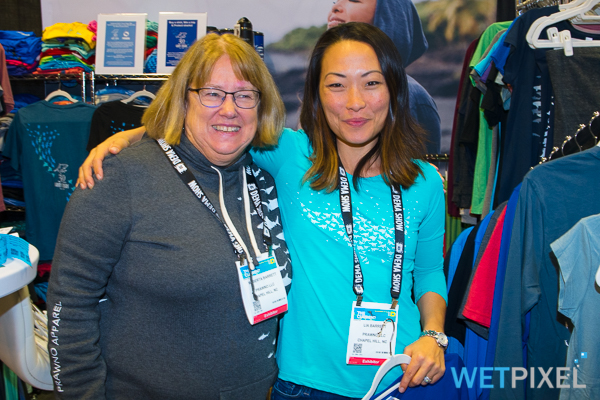
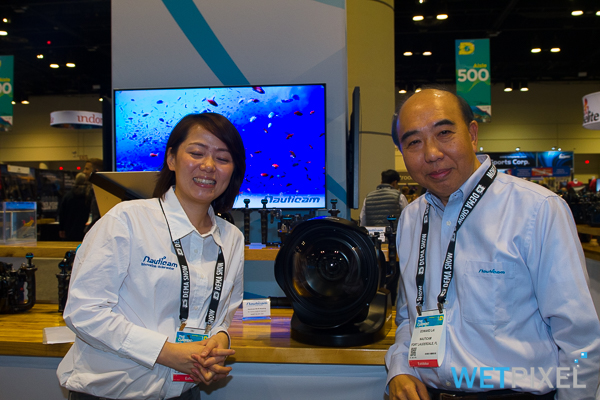
Nauticam
As is traditional, Nauticam has a large stand to display their large range of housings and accessories. Edward Lai, Phoebe Lu, Ryan Canon and Hergen Spalink took it in turns to introduce me to the new products for 2020.
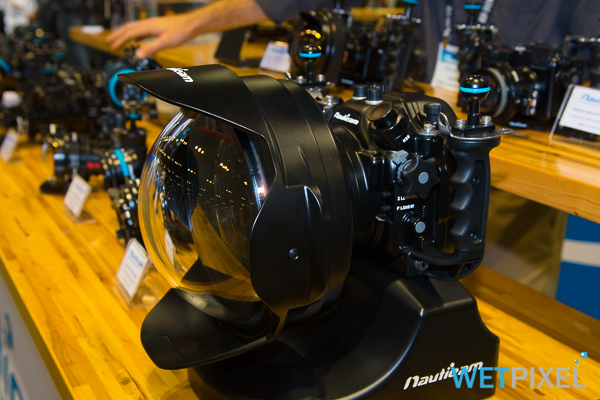
Starting with optics, Nauticam have designed a new version of the Wide Angle Corrector Port. When combined with the new Nikon Z 14-30mm f4, it offers a field of view of 140°, with sharpness across the whole frame, even at large apertures. It has a retractable shade, which when extended, provides protection to the glass dome element and when retracted, avoids vignetting. The WACP II has a N120 bayonet fitting and it focuses in air, so makes split shots possible.

Lens compatibility is still being evaluated, but it looks like most lenses in the 16-35mm focal length range should work. Nauticam are accepting orders for it now, with a planned delivery date in 2020.


The company has also released a new version of the WWL conversion lens specifically aimed at compact cameras. The WWL-C (for compact) is designed to work with compact zoom with a focal length of 24mm and is a smaller, lighter lens which offer 130° of coverage and focuses in front of its front element. It has an integrated buoyancy collar.
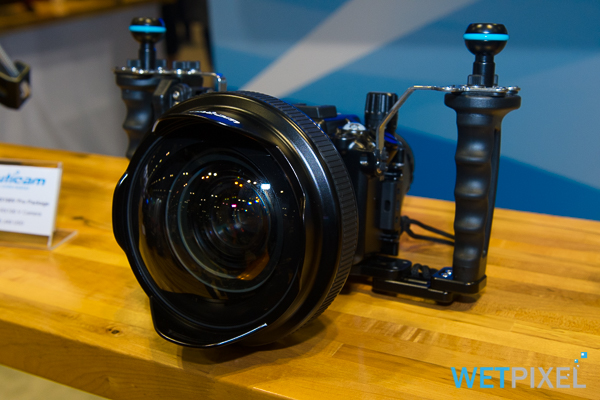
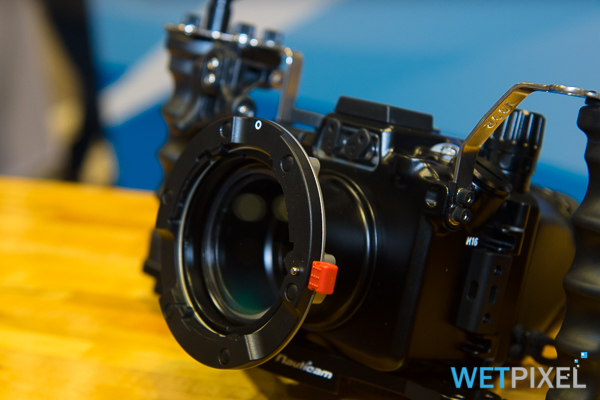
It will ship with a new version of Nauticam’s bayonet mounting system. This is backwards compatible with the existing bayonet mounting, but the new system will not work with type 1 lenses.

Nauticam will be supplying an M67 attachment and a bayonet mount port. There is also an adaptor available that allows the use of the bayonet with Olympus PT-58 and PT-59 housings for the TG5 and TG6 cameras, that allows the use of Nauticam’s accessory optics with these housings.
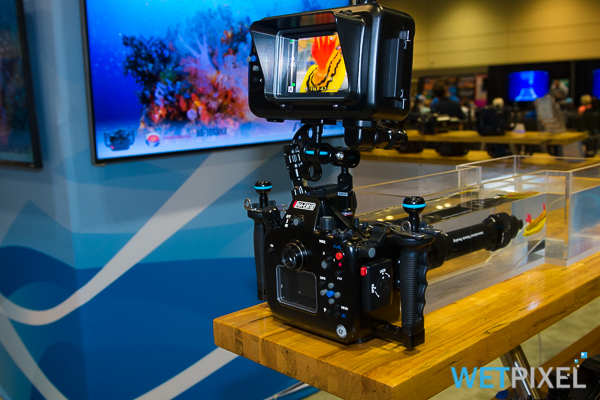
Nauticam haD a prototype of their endoscopic lens on display.
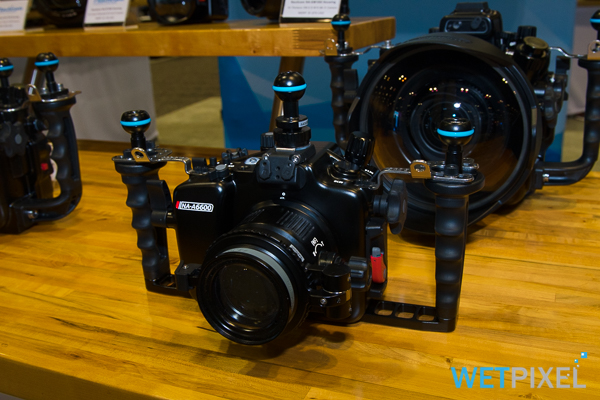

Turning to housings, Nauticam had their housing for the Sony a6600
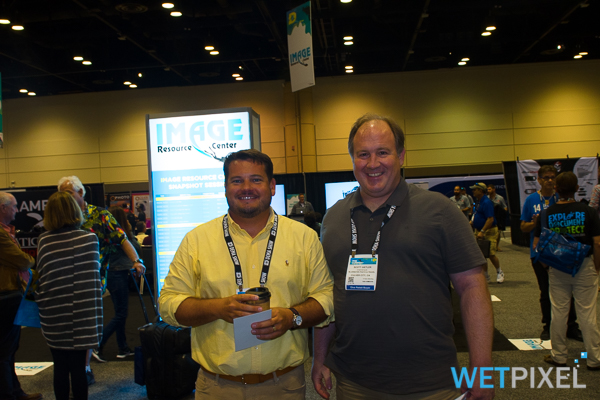
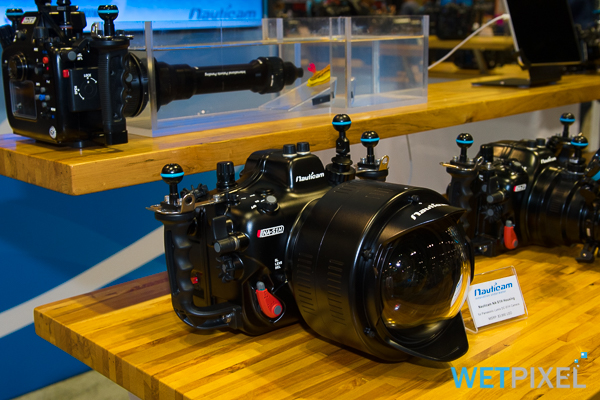
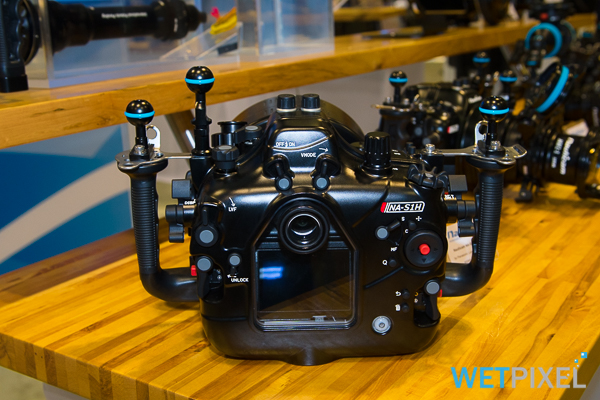
Hergen also showed me their housing for the Panasonic S1 series cameras. There are 2 models, one for the S1R and S1 and one for the S1H, with the latter having video centric features like an HDMI 2 pass through connector.
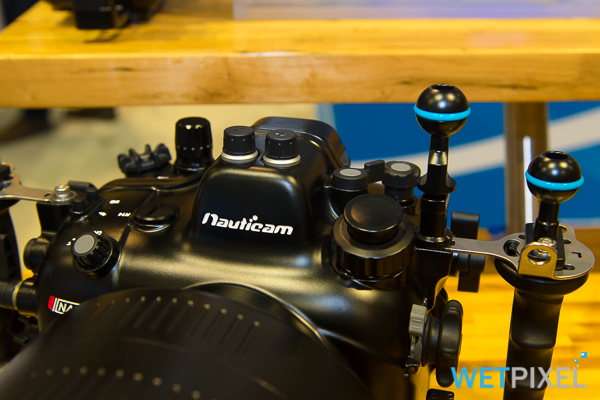
The S1 can offer 10-Bit 4K 4.2.2 output via a paid firmware upgrade, which Hergen assures me is complicated!
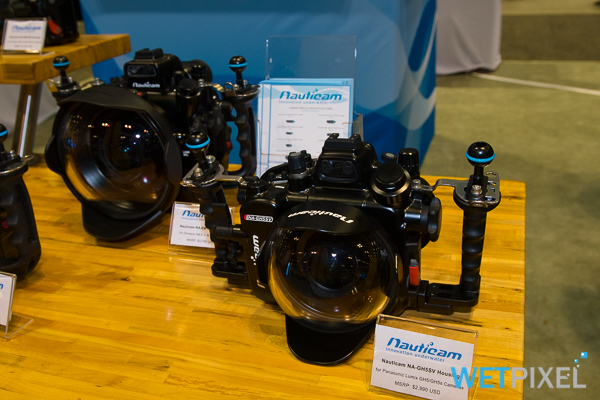
Staying with video features, Nauticam are offering video specific versions of their GH5 and Z7 housings. These offer the pass through bulkheads as mentioned above to enable HDMI recording to an external device.
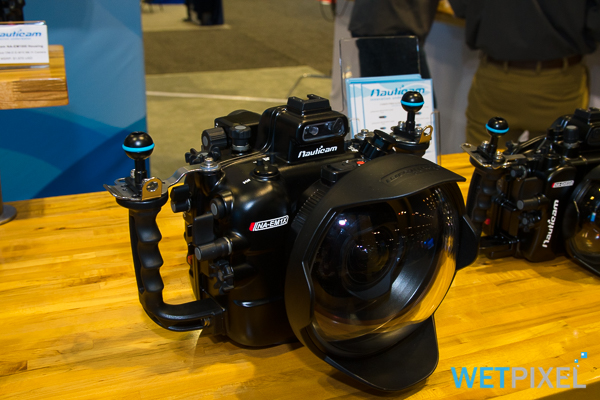
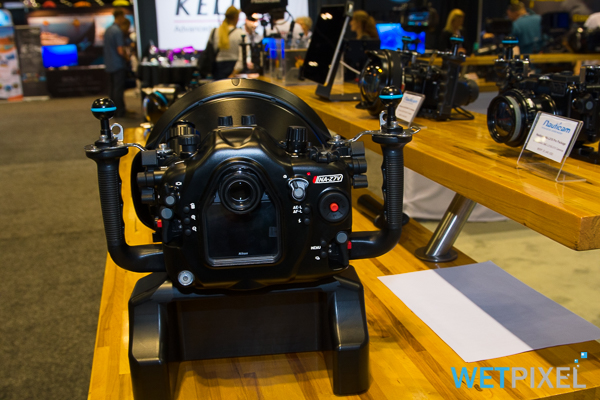
Nauticam is offering an upgrade path for users wishing to upgrade their existing housings to the new models.
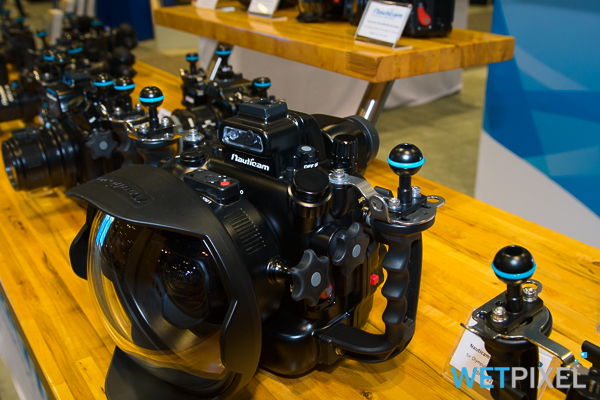
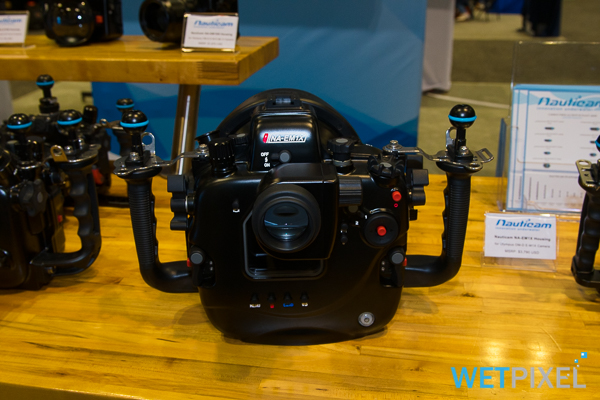
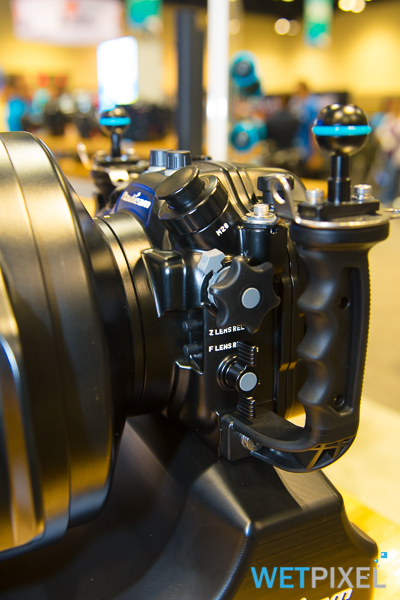
Hergen also showed the new housing for the Olympus EM-1X.
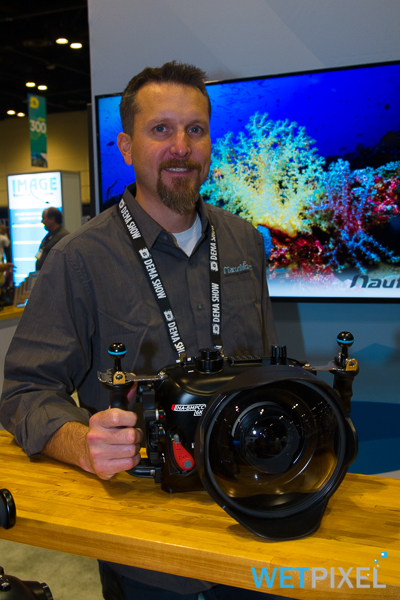
New housings for video cameras include a housing for the Blackmagic Pocket Cinema Camera 6K.
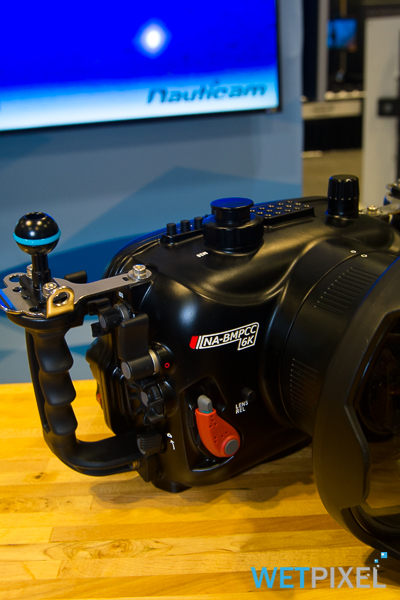
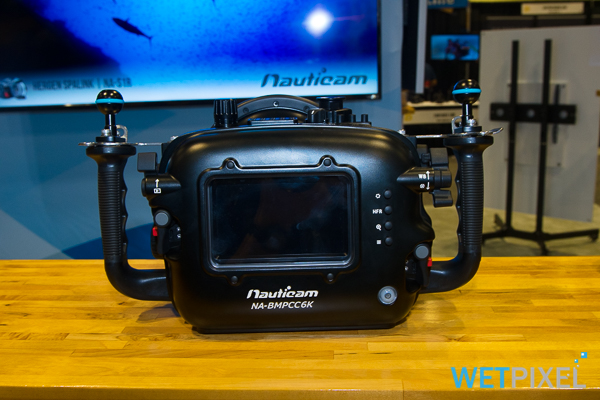
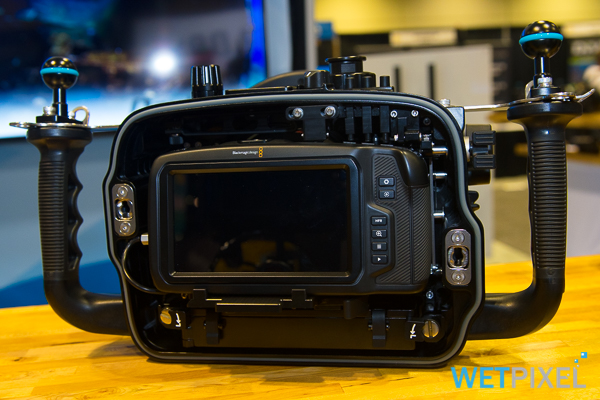

It has an integrated battery pack that accepts 1650 Li-ion batteries and space to add T5 SSDs which cam be connected via USB-C. It has “cinema style” focus and iris knobs and a N120 port mount.
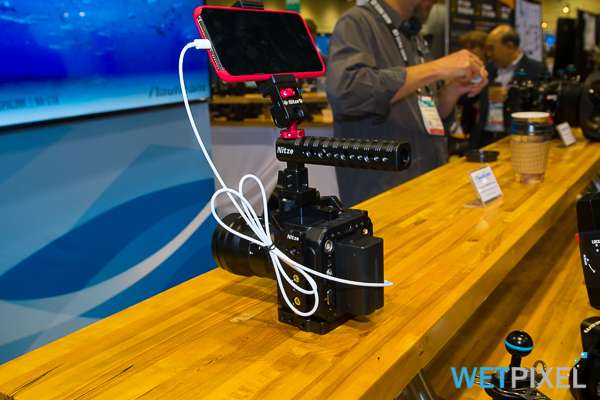
He then showed the very compact housing for the Z Cam cinema camera.

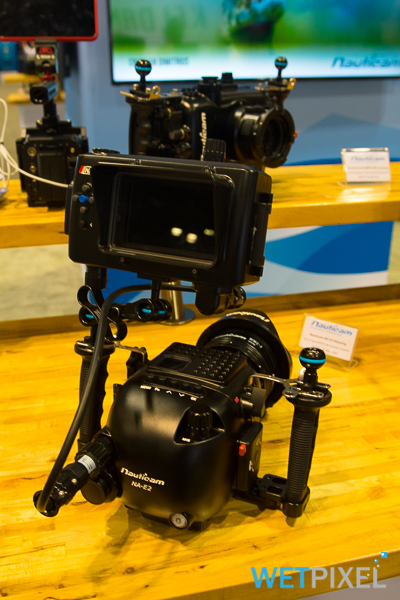
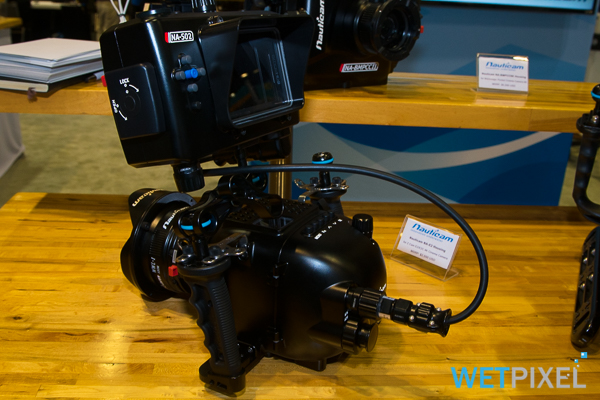
The camera offers 4K output at 120fps and has a Micro 4/3s sensor.

The housing accommodates Sony NP series batteries and has space to allow recording to a T5 SSD. The camera only has a very small (unusable) LCD, so an external monitor is required.
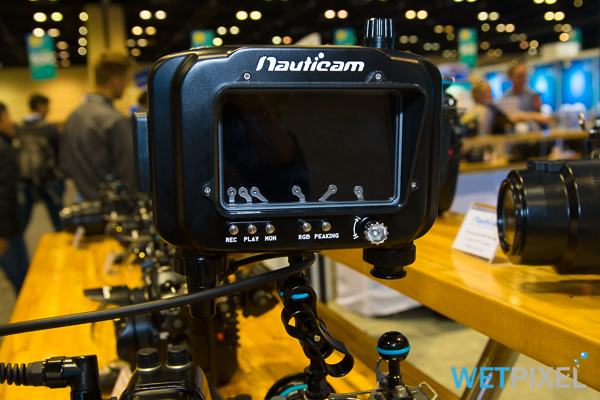
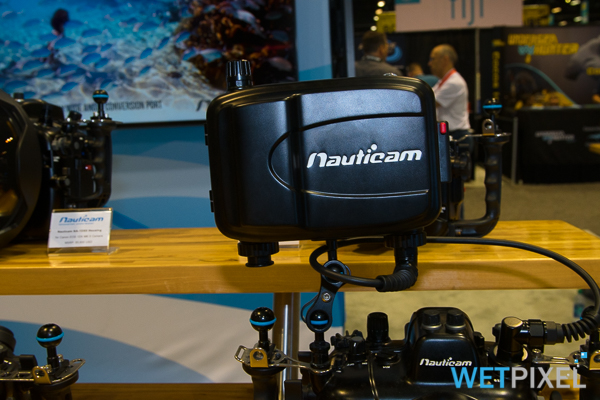

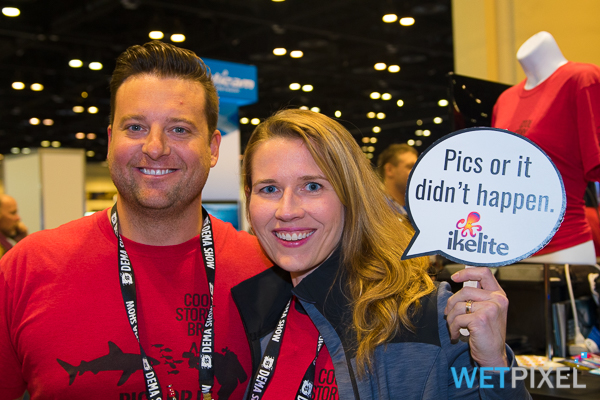
Ikelite
Jean Brigham kindly took some time to show me through Ikelite’s range.
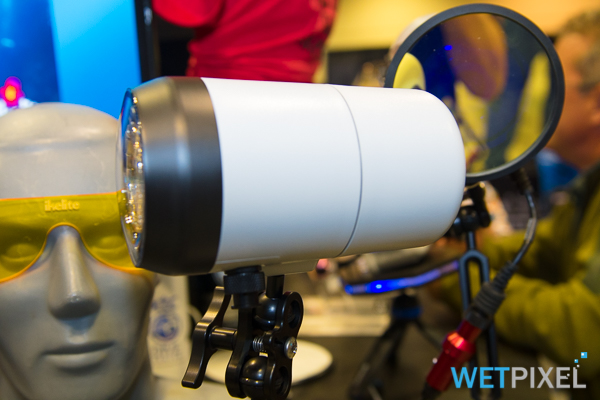
Big news for this year is big update to the DS-161 strobe. It has a circular flash tube with an output of a 4800° color temperature and uses the same battery packs as the existing model.


It has significantly greater power with a wider beam angle and is slightly smaller. It is as yet unnamed, but Jean expects that it will be shipping is early 2020.

Ikelite now offers ICS-5 or Nikonos TTL convertors for Nikon, Sony, Panasonic and Olympus, with a Canon version due to ship in December. Ikelite has changed all their sync cord fittings from brass to aluminum, resulting in a significant weight saving.

Jean then showed me their housing weight system. Their Drylock housing system has lightened the housings so they they are positively buoyant, and there is always some fore to aft flotation issues with bigger domes. The systems is a simple bracket that attaches and adjusts with a large 5 corner wing not and to which a diving weight can be attached.
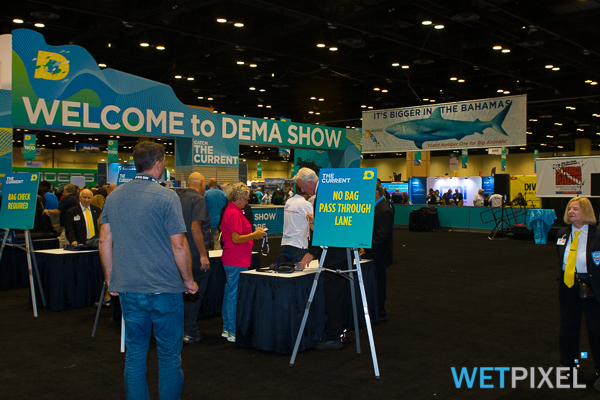
Ikelite area shipping their housing for the Sony a7rIV and expect to ship one for the Sony a9II next week. Both have vacuum valves installed.
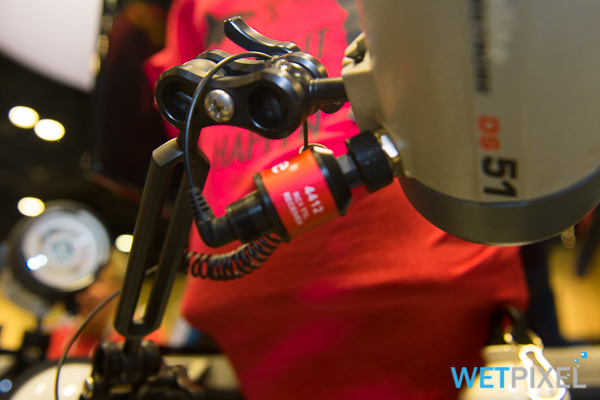
Returning to strobes momentarily, the RC1 connector allows the use of wireless strobe firing with Panasonic and Olympus cameras.
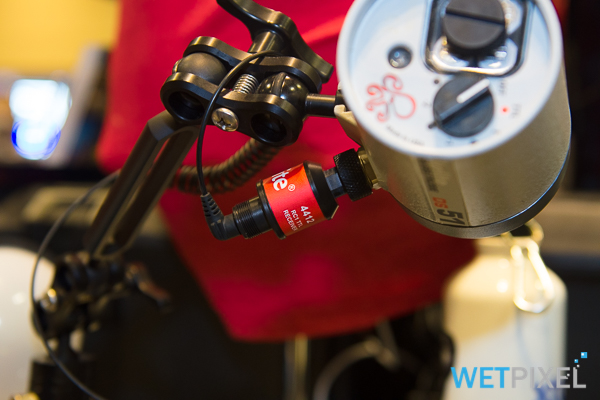
This offers the option of wireless flash firing, using the camera’s own built-in wifi strobe triggering options.
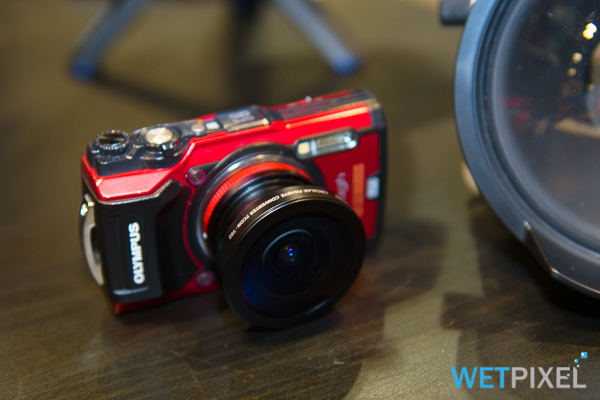
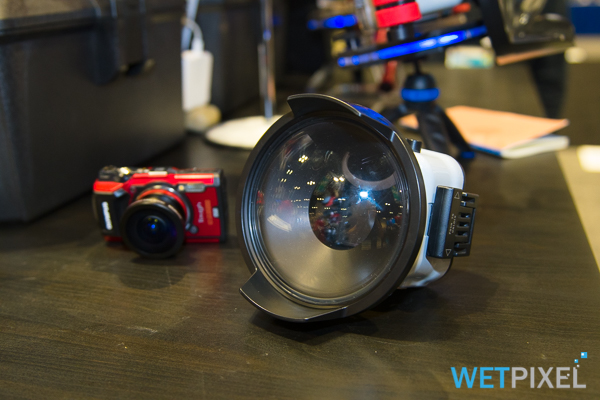

Staying with Olympus cameras for a minute, Ikelite offers a custom dome that works with the FCON-T02 circular fisheye conversion lens for the TG6. It offers full zoom through.
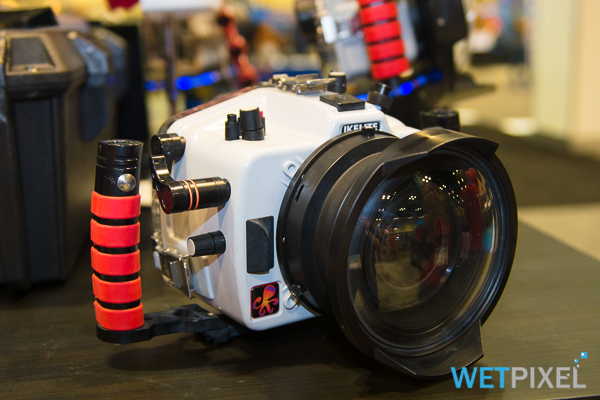
Ikelite’s housing for the Nikon Z6/7 offers compatibility with the FTZ adaptor.
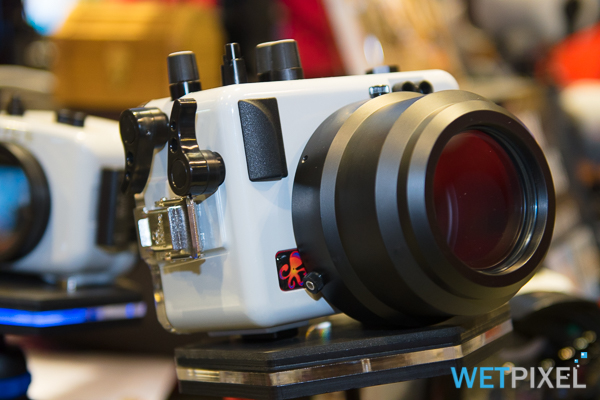
Lastly, their housing for the EOS-M6 Mark II is also shipping now.
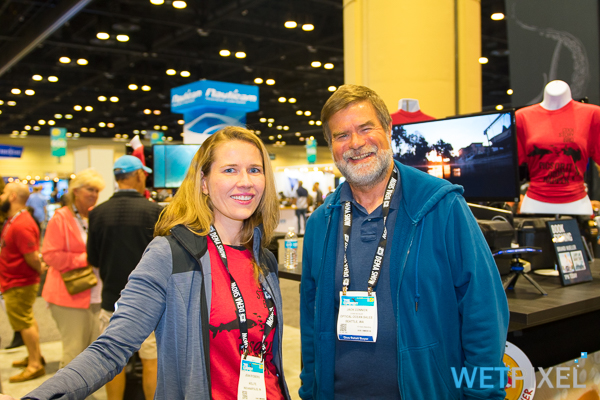
Day 1.
Day 2.
Wetpixel/DPG Party.
Days 3 and 4.